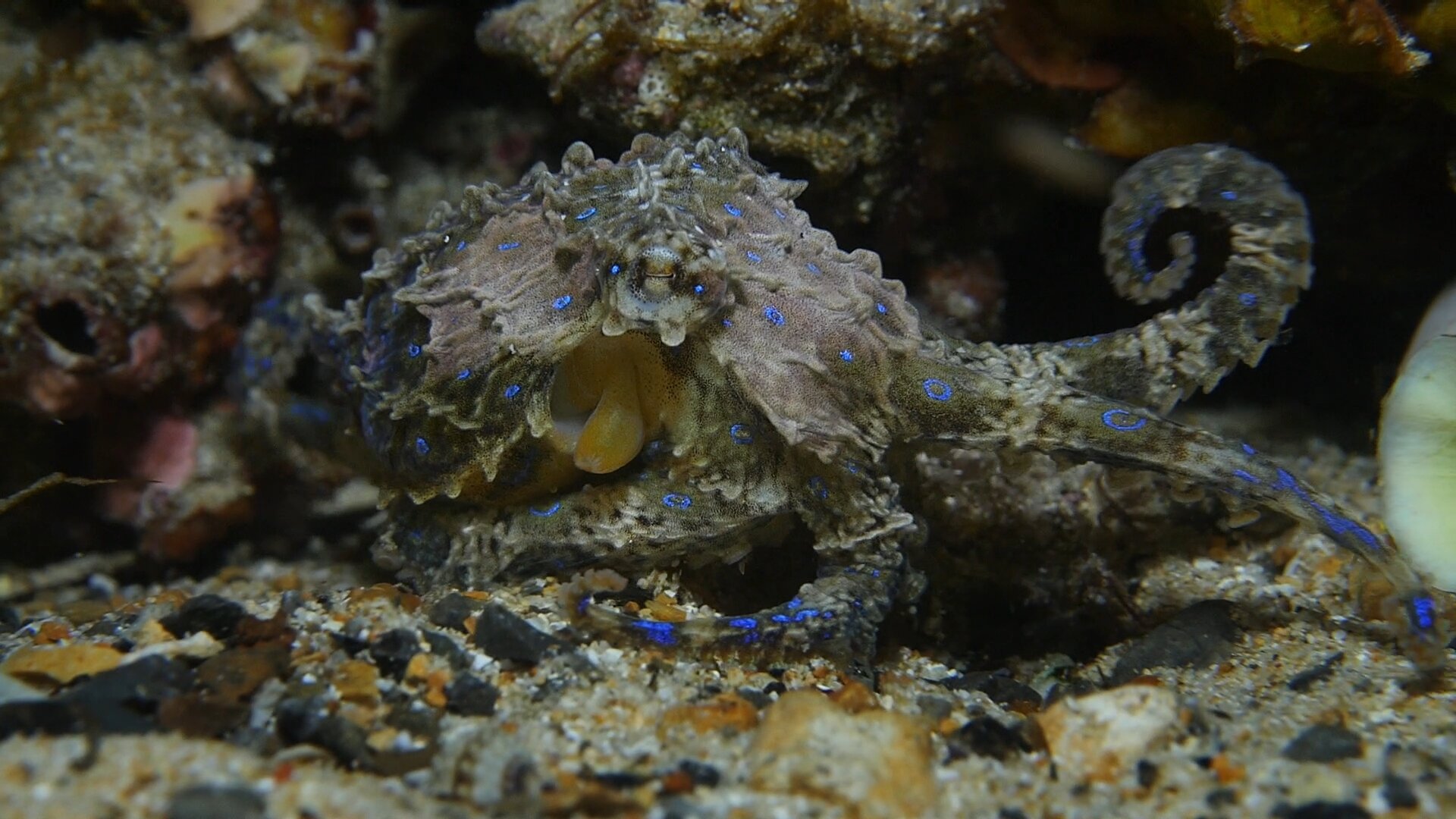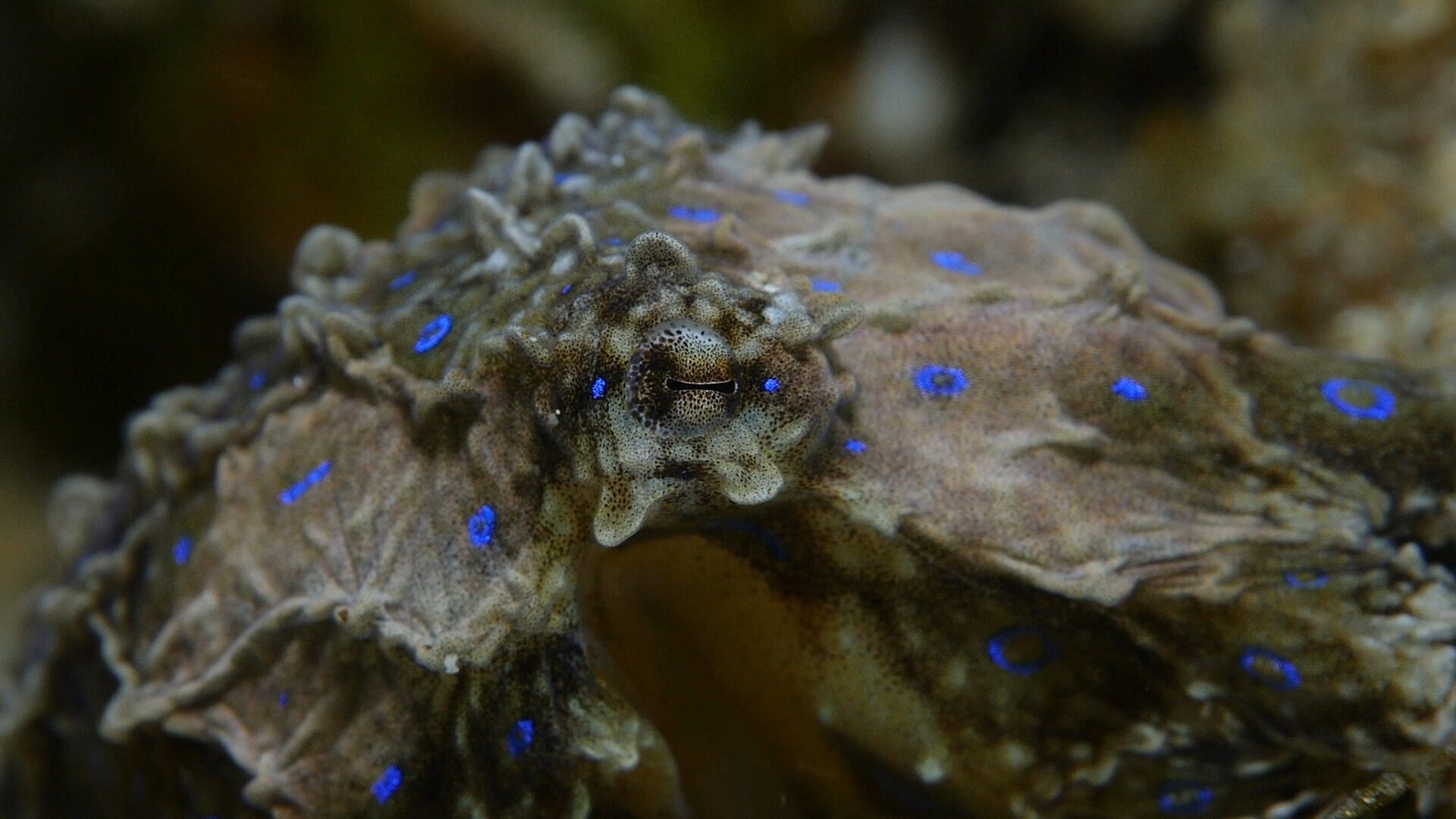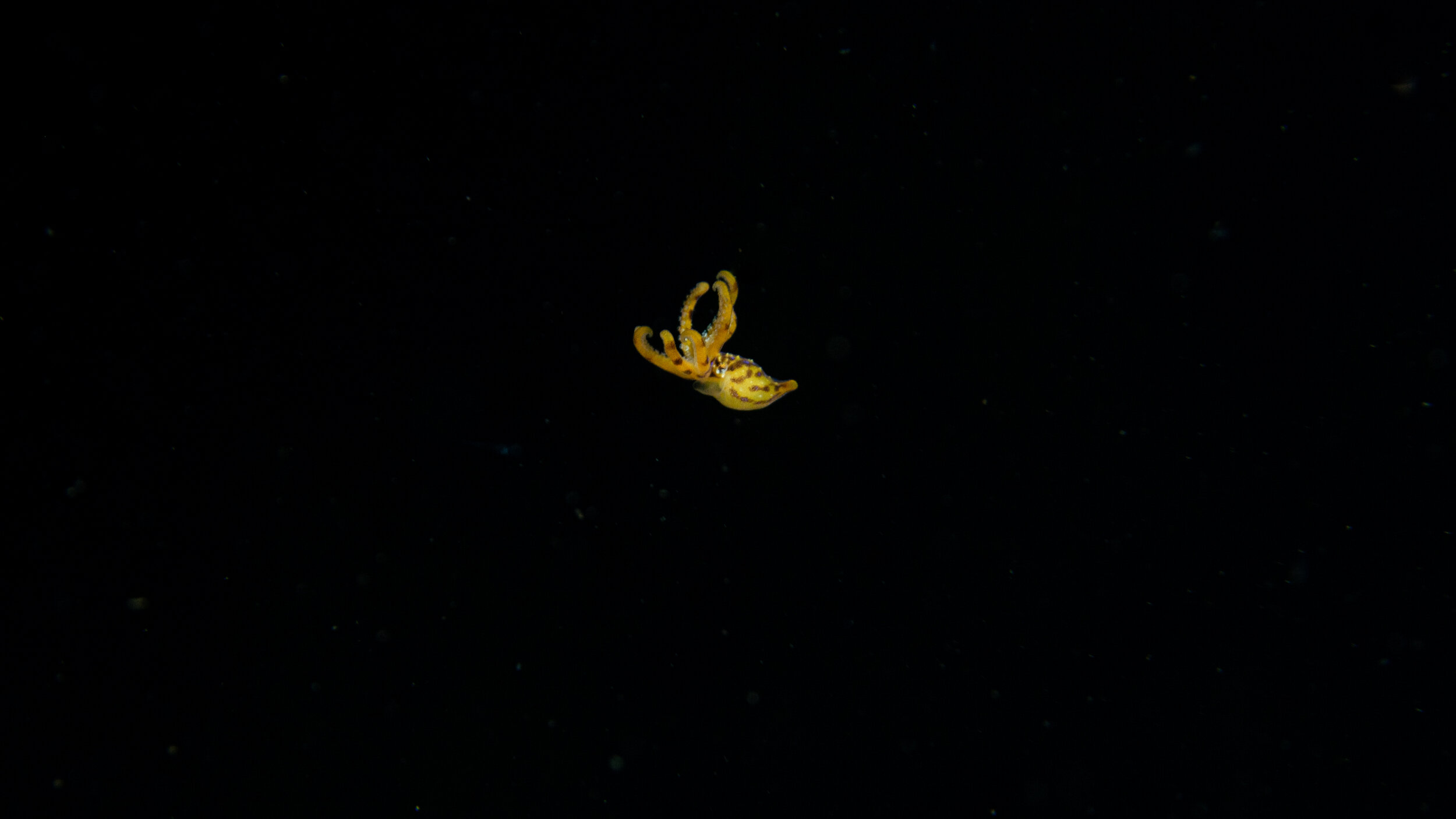southern Blue Ringed Octopus
Blue ring octopuses are sneaky predators, hunting small crabs, shrimps and occasionally small fishes. Their venom contains a toxic cocktail including tetrodotoxin, which works as a potent neurotoxin that interferes with the transmission of signals from the nerves to the muscles of their prey.
Neon warning notice
When resting the blue-ringed octopus blends in with its surroundings with a uniform grey, beige color dotted with large light brown patches called maculae. When agitated these spots will darken dramatically then the bright iridescent blue rings will appear and begin to pulsate as a warning.
Quick learners
Like other octopuses the blue-ringed octopus has a short lifespan of about two years. During the mating season the female octopus will lay anywhere from 50-100 eggs, which she will guard for a long incubation period lasting almost two months. The male blue-ringed octopus dies after mating. The female is no longer able to eat while guarding her offspring and will die shortly after the eggs hatch. The tiny baby octopuses mature very quickly and will begin the mating process the following season.
Misunderstood but not to be messed with
Known for their highly toxic, and deadly venom, the tiny blue ringed octopus is actually a docile creature that will not use their toxins unless provoked. Despite their size, ranging from around seven to ten centimetres, each individual octopus carries enough venom to kill 26 adult humans within minutes. Even though they are recognised as one of the world’s most venomous animals, they are known to have ever only caused three recorded deaths.
Fast Facts:
Species: Hapalochlaena maculosa
Family: Octopodidae
Order: Octopoda
Feeding: Small crabs, shrimps and occasionally small fishes
Habitat: Shallow reefs and tide pools
Distribution: Endemic to GSR
Special Power: Deadly venom








